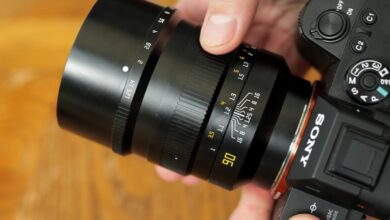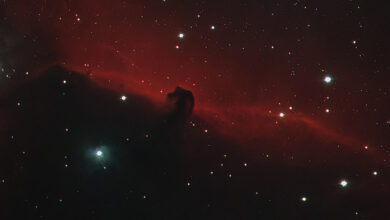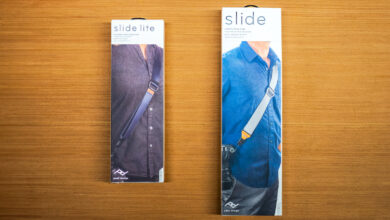Are these memory cards really worth it? We review OWC’s Atlas line of memory cards

OWC’s Atlas memory product line, which includes SDXC, CFexpress Type A and B models, and high-performance readers, doesn’t come cheap. However, they promise top performance and integration with their Innergize card management system. But can users really take advantage of all that performance? In this review, I will look at the ecosystem and test all the features.
While you can buy standalone cards in different form factors and performance levels, I’ll be looking at the latest announcements they made a few weeks ago at NAB: Atlas Pro CFexpress Type A And Atlas CFexpress Type B card reader.

The rest of the product line includes Type B and SDXC cards. The Ultra line, which sits above the Pro card level, offers even higher performance ratings with both SDXC and CFexpress Type B offering up to 2x write speeds. This higher minimum recording can make a big difference for high frame rate video and certain codec settings. For more information, check out OWC’s website, which has a thorough compatibility guide for each card, showing speeds, and many recent camera models.
OWC Atlas Pro Class A card
As a shooter in the Sony ecosystem, I was happy to see a Type A version of the OWC card available. Type A, while not as fast as Type B, can still deliver superior performance compared to SDXC. Many Sony cameras, including my a7R V and FX3, support Type A or SDXC—choosing the faster Type A usually means better support for heavier frame rates or codecs, along with the ability to erase Improved buffering.
OWC provided a 480GB Atlas Pro model for testing, but a 960GB model is also available. These cards differ only in capacity, with the same speed rating.
Atlas Pro Type A supports CFexpress 4.0 and is fully compatible with existing devices using the CFexpress 2.0 standard. This means you can easily insert the card into cameras like the FX3, FX6, a1, a7S III and a9 III, along with using the latest readers that support even faster transfer speeds.
The card is built to a high standard, with a durable metal case. OWC rates it for impact, bend, shock, ESD, UV and X-ray resistance and comes with a 3-year warranty. Although destructive testing was not part of the plan for this review, I can say that it is significantly more durable than the SDXC card, with its thin plastic body. You still want to store your cards securely, but the structure really fits the price.
Speed also matches the price: this card reads and writes very quickly. OWC rates it at a maximum write speed of 1,700 MB/s, along with a minimum sustained write speed of 400 MB/s (an important number for video applications). The card is VPG200 certified, a key designation that some Sony cameras will require to unlock certain modes, frame rates, or codecs.
When filming outdoors, the benefits of any Class A card are clear: much faster write speeds compared to SDXC mean your buffer lasts longer and clears faster, while videographers can can use the heaviest codec or frame rate.
For example, on my a7R V, shooting in lossless compressed RAW, the buffer with an SDXC card lasts for about 50 to 60 shots and can take about 15 seconds to clear. With the Type A card, the buffer has no bottom, essentially clearing as soon as I turn off the shutter.
Photographers using Sony’s faster cameras will notice even more differences. Cameras like the a1 and a9 III, with their fast burst speeds, put even greater pressure on the card’s burst write speed, as much of the time is spent clearing the buffer. Tests show that good Class A cards are about five times the speed of good SDXC cards, which can make the big difference between being ready for the next burst of action or missing it.

Both OWC’s marketing materials and my review only mention Sony gear, but Sony is pretty much the only camera brand that uses the Type A standard, versus the larger Type B. There is a trade-off here, with Class A cards being limited to lower rates. theoretical speed compared to a Type B card with more lanes. However, in exchange, you get same-slot compatibility with SD cards, allowing you to choose between speed and price per GB.
In fact, you’ll find that many readers are designed specifically for Type B cards. OWC’s own readers are no exception. Luckily, OWC includes a Type A to Type B adapter in the box for this memory card, allowing you to use it with a Type B reader with ease.

OWC Atlas CFexpress card reader
Just as Atlas Pro is geared towards the latest standards, Atlas Reader also integrates the latest developments: USB 4 and tailored support for CFexpress 4.0. Overall, this means the card matches both the fastest cards on the market as well as the fastest connection standards around.
This bus-powered reader is small, sleek, and in keeping with Apple’s design language, with rounded corners and an aluminum body (OWC has a long history in the Mac accessory ecosystem). It’s a fanless design but still much cooler than some other CFexpress readers I’ve tested, perhaps thanks to the larger thermal mass and radiating surface area.

I think OWC made a smart choice with the connectivity standards. USB 4 offers a huge step up over USB 3 and even 3.2 readers, while remaining backward compatible—that’s important because USB 4 hosts are less common and most photographers’ devices may be supported through recent Apple Silicon Macs.

During testing, I got transfer speeds of over 1,500 MB/s from my Type A card, while OWC saw a 4x speed increase over a USB 3.2 reader when using a Type B card.

Completing the ecosystem, OWC’s Innergize software is designed to support their cards with health monitoring, “sanitization” to help maintain the performance of the actual flash memory, and card firmware updates. This free software is available for both Windows and Mac and supports all of OWC’s memory cards as well as their wide range of readers. While the Class A card is still too new to see any health impact, tracking this important statistic is welcome, given how “old” the other cards are can be very difficult to track.
Overall, the Atlas memory card ecosystem is a very good choice for many photographers and videographers. Sony gamers demanding the highest performance will be excited to see such a competitively priced option for a Class A card, especially at these higher capacities. While I can’t give a general recommendation for the Type A, as photographers who don’t regularly fill their buffers won’t notice a performance difference in the field, the Atlas line still has attractive SDXC options. The guide also provides access to Innergize software. If you are a fast shooter then the Atlas Pro Type Card is a great choice. Its Currently available in 480 GB and 960 GB capacities. If you’re looking for a CFexpress reader that can match the formatter’s incredible speed, the Atlas reader is also a great choice. At just $99, it’s a small extra to ensure you get the most out of your card when you use it, while also getting a level of future-proofing thanks to smart connectivity options. The The Atlas CFexpress reader is also now available.
What I like
- Perfect performance and reliability
- Meets or exceeds all evaluated specifications
- No extra cost for accessories (Type A to B adapter, fast quality cable for reader)
- The price is very competitive compared to other type A cards with similar performance
What can be improved?
- Class A cards only have premium value for certain shooters
- Older server devices may not take full advantage of the Atlas reader’s speed




